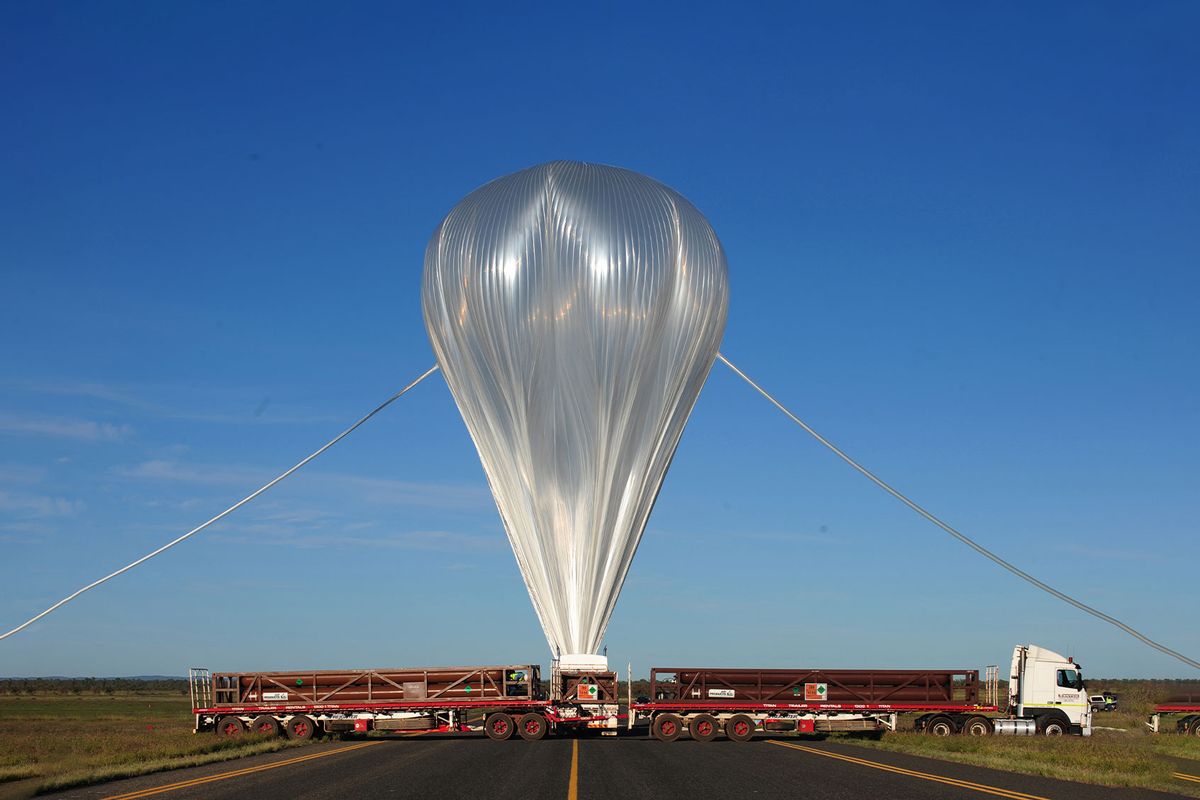Leave it to balloons to spark alien suspicions.
On Friday, U.S. warplanes shot down a "high-altitude object" off the coast of Alaska, stating that it posed a threat to civilian airliners. On Saturday, an "airborne object" was shot down over Canada. On Sunday, one over Lake Huron in Michigan. The three incidents come after the U.S. shot down a Chinese surveillance balloon over the Atlantic Ocean on February 4. Since then, misinformation about the objects, their origin and purpose have run rampant online.
Some conspiracy theorists have claimed that the Biden administration deployed the aerial objects to distract Americans from more pressing issues happening, like the Ohio chemical spill. Others online have jumped to the conclusion that they're of extraterrestrial origin. As AP News reported, internet searches for the term "UFO" increased around the world on Sunday, indicating heightened speculation.
When such misinformation reached the White House on Monday, White House press secretary Karine Jean-Pierre made a point to extinguish the UFO rumors right away.
"I know there have been questions and concerns about this, but there is no — again no indication — of aliens or extraterrestrial activity with these recent takedowns," Jean-Pierre said. "I wanted to make sure that the American people knew that, all of you knew that and it was important for us to say that from here because we've been hearing a lot about it."
"It's really not a safe bet to say that the aliens even know we are here."
Still, with little details about these aerial objects, it's only a human inclination to scream "ET!" But astronomers like Seth Shostak tell Salon that if aliens were hypothetically going to spy on humans, they wouldn't do so in the form of balloons.
Aliens "wouldn't use balloons," said Shostak, a senior astronomer at the Search for Extraterrestrial Intelligence (SETI). "Putting something into orbit [like satellites] is a lot better than balloons, which can be shot down," Shostak explained. "But balloons, they just go wherever the wind blows, right? Now, I guess you could put some sort of a rudder on them and steer them or use some other method of steering."
Shostak added that details about the first balloon suggest it had some maneuverability. The U.S. State Department told reporters that the Feb. 4 balloon had equipment onboard, such as large solar panels, antennas and sensors. "But satellites, you can put them up into orbit just to make sure that they go over the part of the country that you're interested in," Shostak said. "Balloons, that sounds like the wrong choice for ET, in my opinion."
Harvard astronomer Avi Loeb agreed.
"It's not likely because balloons have no propulsion, restricting their maneuvering capabilities," Loeb said, adding that it's common for balloons to reported as Unidentified Aerial Phenomena (UAP). "In the 2022 report on Unidentified Aerial Phenomena, submitted by the Office of the Director of National Intelligence to the US Congress, there were 366 new sightings in 2022; of these, 163 were balloons and 26 were drones."
Shostak said that when it comes to alien speculation, what's often left out of the conversation is the "incentive." Would extraterrestrial life even know that humans exist on Earth?
Want more health and science stories in your inbox? Subscribe to Salon's weekly newsletter The Vulgar Scientist.
"To find the presence of homosapiens on Earth, it's not easy, even if you're the distance of the nearest other star system, which is nearly four and a half light years away," Shostak said. "You could have a telescope that's the size of a parking lot, and it still wouldn't be able to see the Great Wall of China, or something else we built."
The closest star system to our own is Proxima Centauri, which famously hosts the exoplanet Proxima b. This exoplanet has been thought to be the most likely habitable exoplanet in the system since it's roughly the size of Earth and located in the star's habitable zone, meaning it is at an orbital distance where liquid water could exist on the planet's surface. The exoplanet orbits its star every 11 Earth days, and as Shostak mentioned, is nearly 4.2 light years away. Though that is extremely close in astronomy terms, there are 5.88 trillion miles in one light-year. This means it would take thousands of human years to travel such a distance. Shostak said the only way extraterrestrial life would know humans exist on Earth would be if they picked up radio, television or radar signals.
"But for them to do that, they'd have to have large antenna farms, [and] they may, but they also can't be very far away, because if they're more than about 75 light years away, no signals from Earth have yet reached them because we weren't broadcasting any earlier than that," he said. "It's really not a safe bet to say that the aliens even know we are here."
Read more
about UFOs



Shares